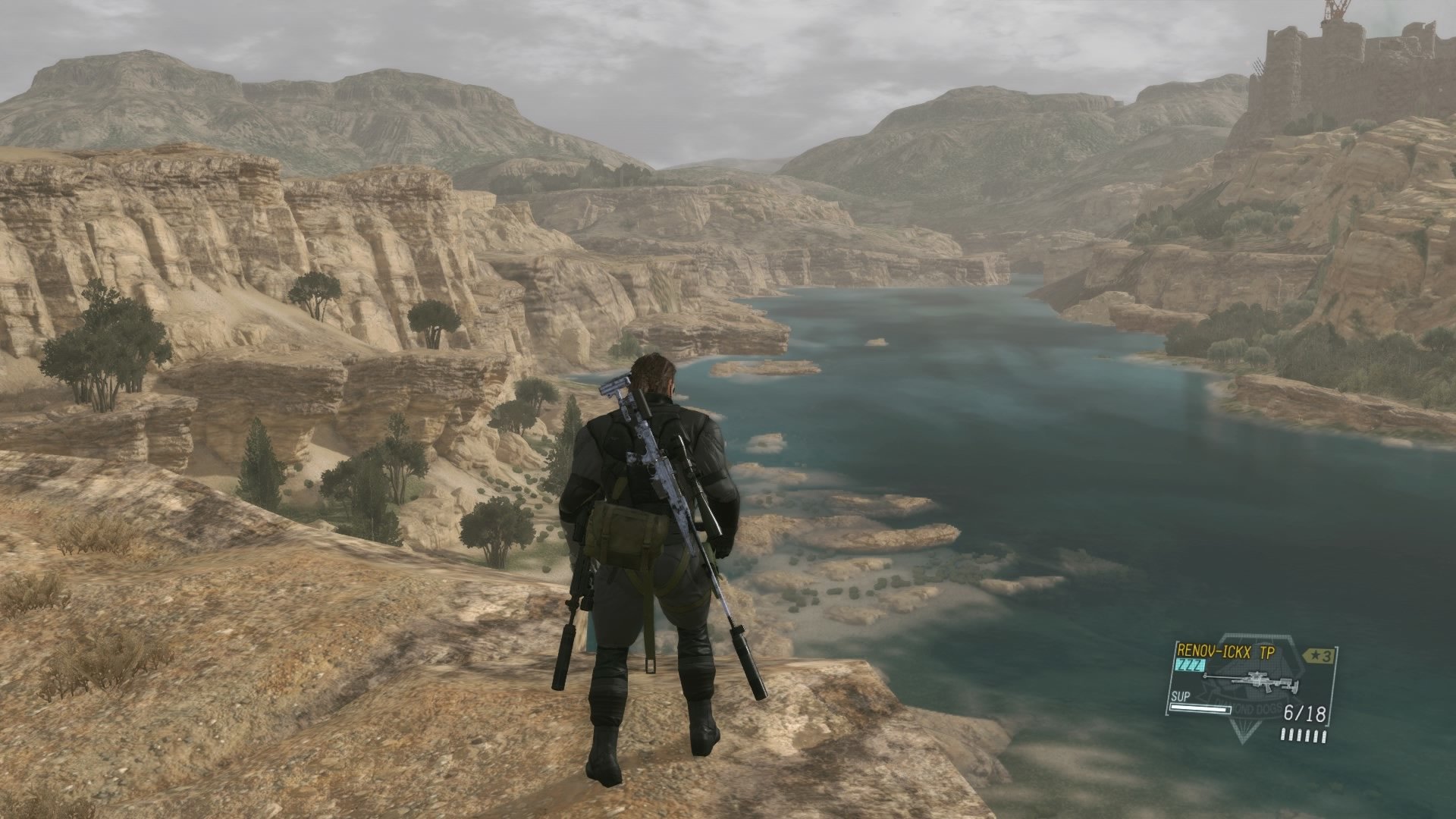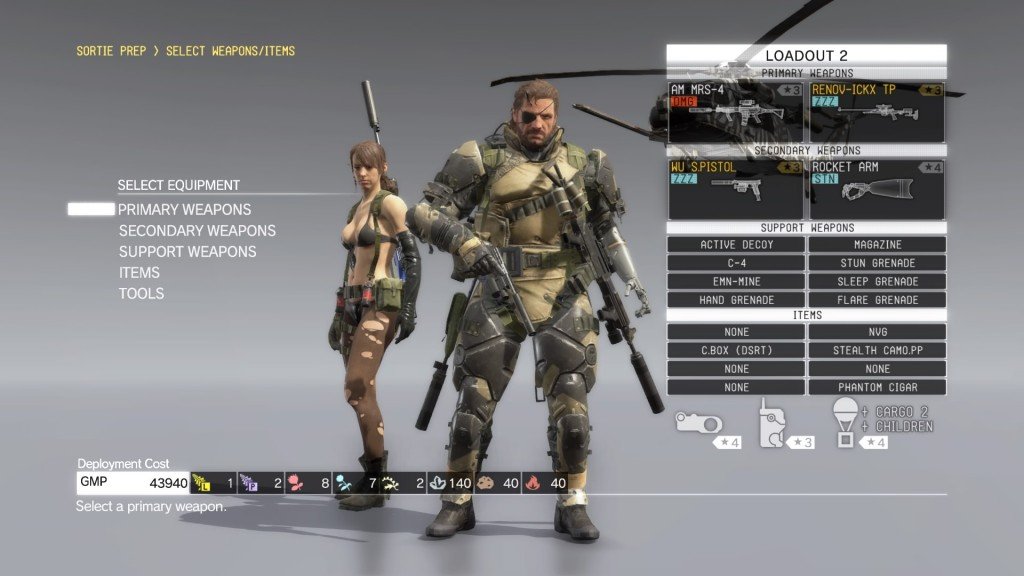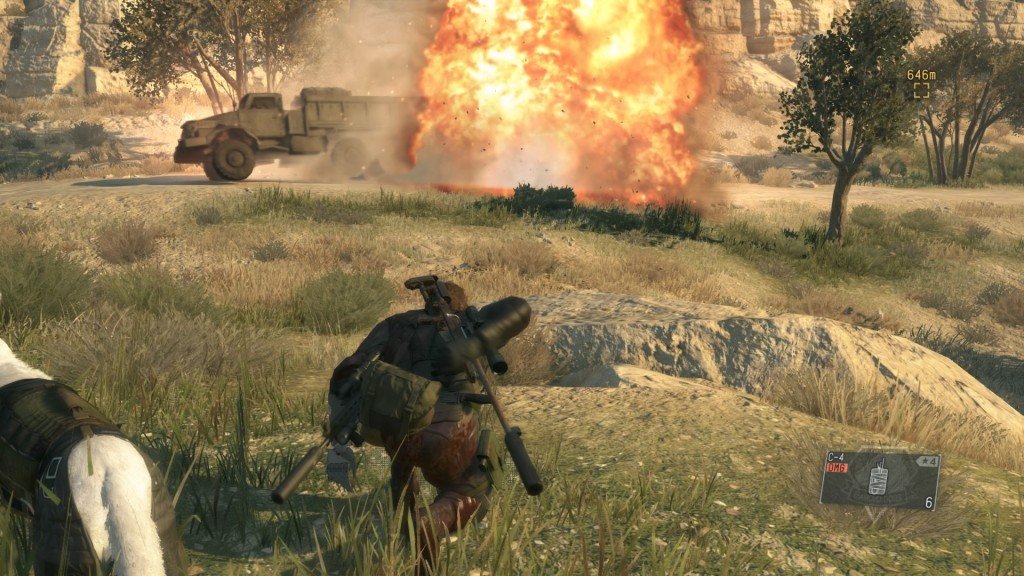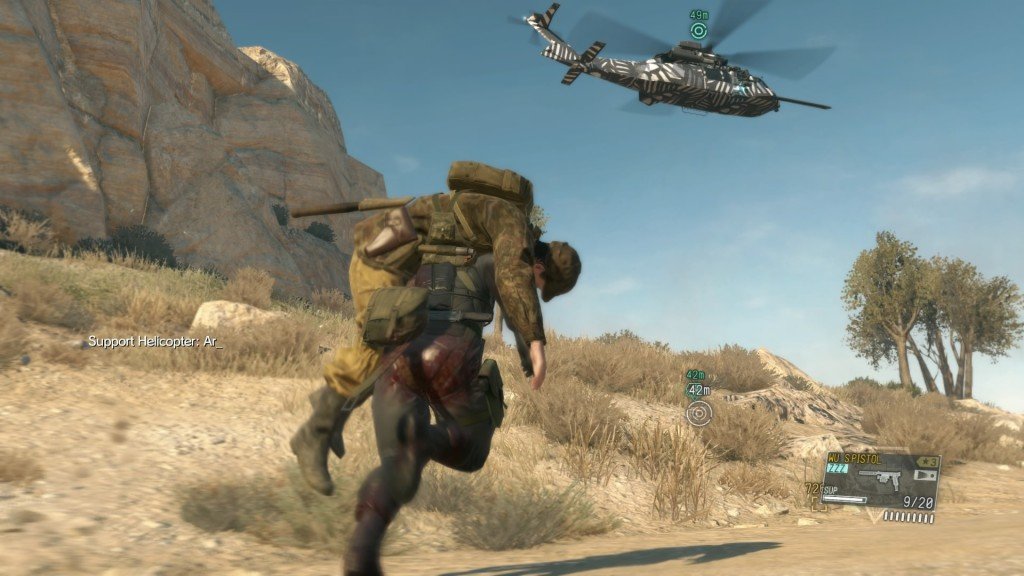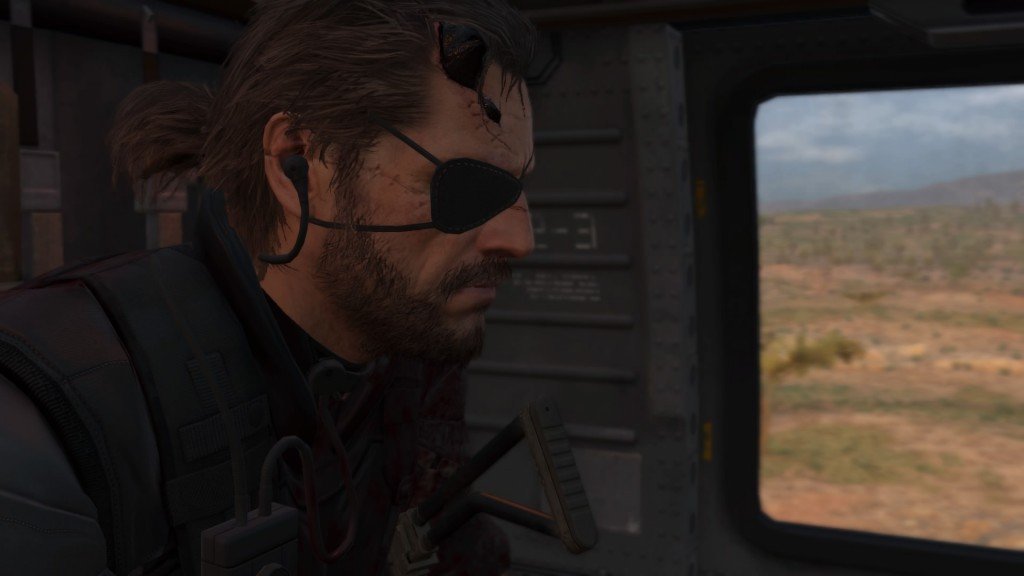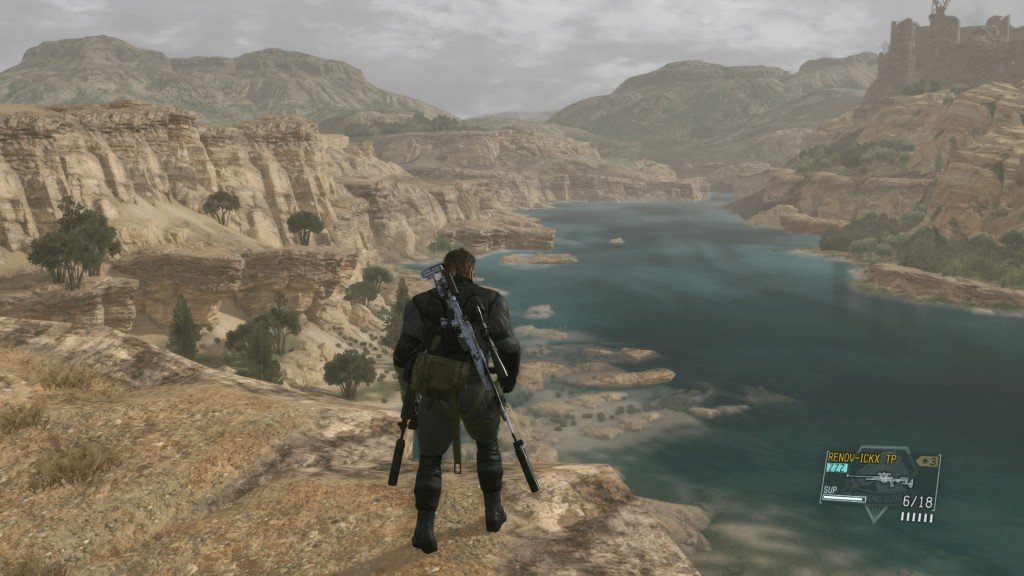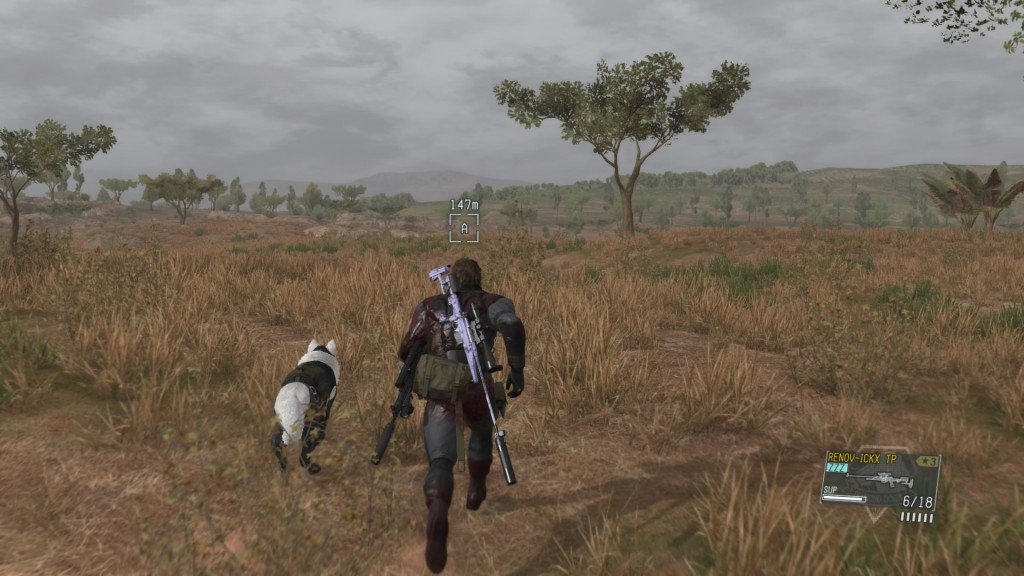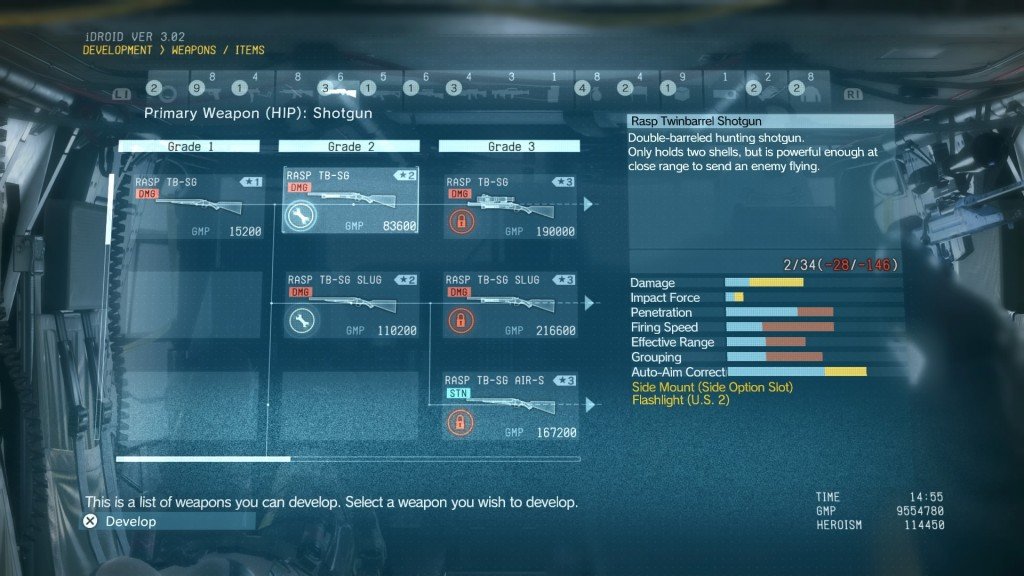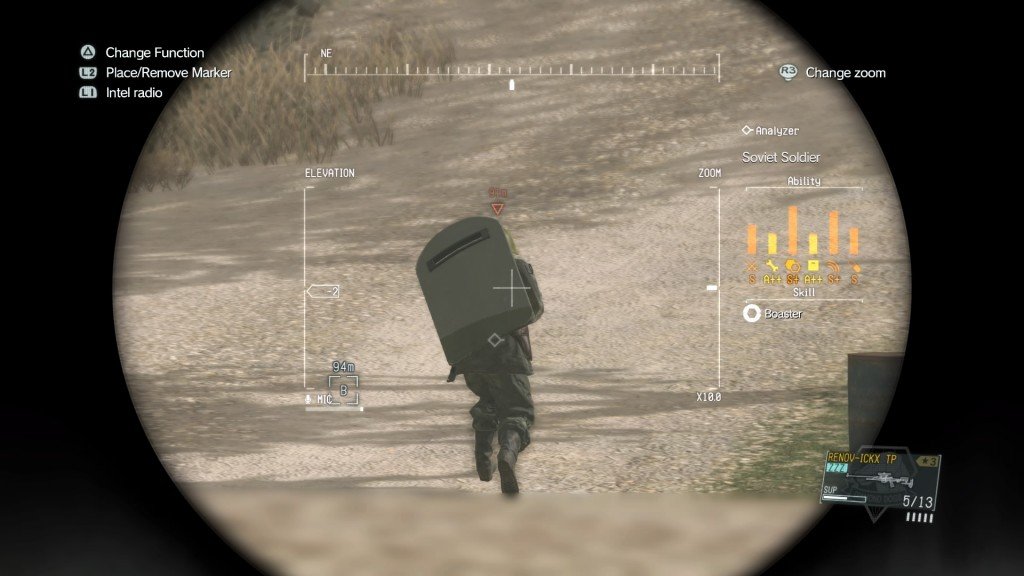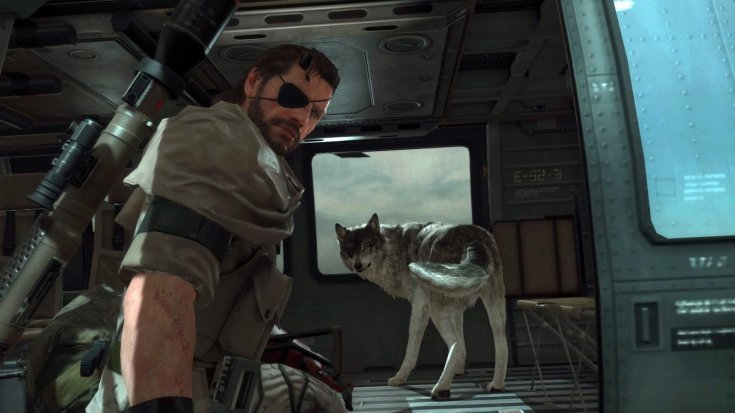Metal Gear Solid takes me back to playing video games with my friend as we sat on the floor staring at a small TV. The first thing anyone will mention about Metal Gear Solid is the insane, often times, whacky character-driven story. It’s what people came to love most about Metal Gear Solid, at least, that’s certainly what I can claim for myself. It’s also the sole reason why The Phantom Pain actually let me down. I will fully admit right up front that The Phantom Pain is an excellent, wonderful game, but it is not perfect. In fact, it may turn off many long-time fans.
The most important thing to note is the non-linear mission structure compared to the usual narrative-driven one. Instead of proceeding through a story with one mission leading into the next. The Phantom Pain follows the concept of Peace Walker with having a home base that you select what mission you wish to a carry-out. Once completed you can return to your base and select your next mission.
There is nothing wrong with this concept. This style of gameplay allows you to fine-tune your equipment for each mission. Need to assassinate a target? Maybe a long range sniper rifle will suit your needs? When the missions call for kidnapping someone, clearly long distance weaponry may not be the best way to go, or maybe it is. It’s completely up for you to decide.
The freedom The Phantom Pain offers you is truly the greatest element in this game. It was always up to me how I wanted to tackle an operation. It wasn’t just down to weapon choices, but also playstyle. In most Metal Gear Solid games, you could only get a high rank if you are stealthy and avoid killing. The Phantom Pain allows you to go in guns blazing and still receive that perfect ‘S’ rank. This caters to everyone’s playstyle and disperses that feeling of guilt when the alert goes off.
Okay, maybe that’s a lie. There is still no worse feeling than being caught when you have been crawling inch by inch for the past five minutes. But at the same time the ability of The Phantom Pain to switch from a stealth game to a third-person shooter in an instant is excellent. The controls handle expertly and there was never a hitch switching from stealth to full action. The importance of that smooth transition cannot be underestimated. There were plenty of times I had to switch from lying on the ground behind cover to dashing in and out of buildings as mortar fire started raining down from above. It’s fast and intense. Some of my favorite experiences with The Phantom Pain occur in these transition moments where I have mere seconds to decide what I’m going to do next after being caught.
This makes The Phantom Pain actually the easiest Metal Gear Solid for a beginner to pick up. They don’t have to worry about stealth causing an automatic failure, nor do they need to worry about becoming overwhelmed the second an alarm goes off. Of course, true experts of the series will find it still plenty difficult to complete a mission without a single alert.
Most missions involve capturing someone, killing someone, destroying something, or collecting something. There is some variation, of course, but nothing strays too far from those principles. The main story missions have a little more depth while the side-ops can be completed sometimes in less than two minutes. It’s fun to pick a mission, choose your equipment, ride in on a helicopter blasting 80’s music, scope out the area, and then execute your plan. Then downside is when you’ve done the same mission ten times and nothing changes.
The Phantom Pain is a lot of fun to play, but its biggest issue is repetitiveness. I just laid out all the types of missions there are and many times they even take place in the same locations. The map may be spacious, but there is little to see or do aside from enemy encampments. Sure there are animals running around you can collect for your zoo (yes a zoo) but it’s not as interesting as it sounds. One instance I performed three missions in a row that all took place in the same enemy compound. I used the same entrance and pathway to sneak around every time. I even memorized the guard movements. It took the fun out of the mission.
When I spoke to my friends about this they said it was my fault. I shouldn’t have done those missions in a row or I should’ve changed my equipment to make it more fun. I feel I shouldn’t have to do that. I want to sneak around quietly. Why should I have to change the way I play to make a mission more entertaining?
I don’t want to confuse this and say The Phantom Pain’s mission are all boring. They aren’t. But the 12th time I have to rescue a person and it’s the 7th time I’ve been in this enemy compound already isn’t going to entice me very much. After a while, I started to ignore all the side-ops or only do a couple at a time. They simply became too repetitive for me to even bother with.
This all gets worse in the second chapter when you are forced to do exactly the same missions over again but on a harder difficulty with more restrictions. To make it worse, the missions you were forced to play again were already some of the most annoying ones in the game, now with even more annoyance. One restriction drops you in with no equipment and another will cause you to fail the mission the moment an enemy is alerted. I hate when games make me fight the same bosses over again, and I really hate when a game makes me do the same exact missions again. It serves no point but to extend the game and I hated every moment of it. I actually stopped playing for a couple weeks because I found no reason to continue. If the side-ops were repetitive and the main missions were now literally the same one I already did, what was the point?
The reason I lost my drive to continue was the lack of a story. Yes, cut-scenes exist but compared to any previous Metal Gear game they are lacking big time. This may not bother people especially since many complained Metal Gear Solid 4 had too many cut-scenes. Whatever you prefer, it can’t be denied that with little cut-scenes and the selective mission structure not being tied together with any big story moments, The Phantom Pain has the worst story in the series. Kiefer Sutherland does a nice job of voicing Big Boss, but in the cut-scenes he’s noticeably absent. A dramatic moment will occur and Big Boss will be completely silent only offering a hand on a someone’s shoulder. It’s a little hard to ignore.
Most of the story is told with cassette tapes. They are interesting to listen to and definitely open up the story more. Being able to play them as you carry out mission is nice, but the problem is how every time anything happens Kaz has the habit of opening his obnoxious mouth and commenting. This turns the cassette tape audio down so you miss what you are really trying to listen to. This means to really get the story you have to listen to cassette tapes while doing nothing and then it defeats the whole purpose of them being on cassette tapes.
Then there’s the problem of the story just being bad. I didn’t even like any of the characters aside from Quiet, D-Dog, Ocelot, and Big Boss. Two of them I liked because they were useful in battle. The other two I only liked from the previous games in the series. Skullface is a nice villain, but his motives are questionable and he’s cut short just as it really starts to pick up. The story loses itself completely by the end of the second chapter, and I get what it was trying to do, but so many things were left unanswered I was completely underwhelmed by the end of the game.
I didn’t feel invested in the story even a tiny bit. For some of you, that will make it difficult to find the motivation to continue through the missions (like me). For others, you won’t care at all and maybe even enjoy it more since the focus is all on the gameplay. In its defense, the gameplay is as near perfect as can be.
The shooting and hand-to-hand combat all feels perfect. I’m not exaggerating. Aside from Big Boss having trouble running up a small slope sometimes, everything else feels amazing. The feel of the weapons firing to successfully sneaking behind someone to interrogate them at gunpoint. It all feels perfect. Add in the buddy system and the gameplay gets even more fun.
Buddies are allies you meet throughout the game that lend you their skills. A horse, a wolf, a sniper, and even a mini mech. With my playstyle leaning towards stealth. The wolf and sniper were my best allies. The wolf can mark nearby enemies, distract soldiers, and even attack them for you. He’s perfect for sneaking into a base because every enemy within 50 meters will be marked. The sniper I would send ahead of me to scout the enemy encampment, and then I’d have them watching over me. I could give her commands to plan out simultaneous attacks or tell her to cover me as I did my best to run in and out. The more you use them the higher your bond with them becomes which in turn gives new abilities.
Another amazing aspect of The Phantom Pain is the things that happen outside of your control. Take the dynamic weather for example. It’s is a great touch that really changes everything. I was having trouble planning my route to rescue a prisoner when a sandstorm rolled in. With the visibility almost zero I could run in with ease and get the person out. Likewise, it has also messed me up when I was sniping from a distance.
By far the coolest feature The Phantom Pain does is the way the A.I. grows to counteract your fighting style. If you constantly go on night mission then they will start to wear night-vision goggles. Keep getting head shots? They will wear helmets. Throw a lot of smoke and gas grenades? They’ll wear gas masks. They adapt. This makes you have to change your strategy or at least make it harder for your normal strategy.
Overall the A.I. is intelligent enough, but there are the odd times when they do quirky things. One time I was still undetected but mysteriously, two soldiers changed their direction and headed right for me. I was not on a proper path of any sort and they clearly knew exactly where I was even if I never was technically revealed. Sadly, they can be outsmarted pretty easily. Snipe from a distance and watch half the world come charging at you so you can easily sneak around into an empty base. Still, it’s a nice tactic to take advantage of.
You will be spending a majority of your time in the field, but you will also spend a lot of your time in menus. Admittedly, they aren’t the most user-friendly, but after wrestling with them for a bit you will navigate them easily enough. In these menus, you will control everything about Mother Base like assigning staff members, selling equipment, customizing practically everything, and supporting your R&D department.
This is where the Fulton system comes into play and what is shockingly the most addicting part of the game. You tie a balloon to an enemy’s waist so they can be lifted into the air and taken back to your base where they are quickly brainwashed to join your side. They all have skills that can help whatever department you assign them to. When these departments level up they unlock new items for you or perform tasks to help you The Intelligence department will scout out encampments ahead of you and R&D department will allow you to develop to new weapons.
If personnel manager and weapon development menus don’t sound interesting to you well…you’re stuck doing it no matter what. For better or for worse you can’t ignore this part of the game. The people are assigned for you, but it’s important to hop in and make sure Kaz is doing a good job. Everything else is up to you and it really is important you spend some time with it. Making sure you develop the right weapons, collect the proper resources, and send your troops out for combat missions is essential. You will only make your own missions tougher if everything else is ignored.
Not only will this help with your missions, but it actually builds your Mother Base as well, which you can visit and explore. It sounds exciting, but it couldn’t be more boring. I’ll admit it’s cool seeing your base expand, but it’s empty with almost nothing to do on it. So while a nice idea overall. You won’t really spend any more time than you need to there.
On the other hand, you may find yourself spending a lot of your time at other people’s F.O.B. (Forward Operating Base). This is a base that belongs to another real player in the world. It’s a station with the soldiers they have collected and filled with their own resources. Invading another base allows you to steal their people and resources. It’s a cutthroat world out there and after you invade they will have the ability to retaliate on your own base. I didn’t think I would bother with the F.O.B.s too much, but it was strangely addicting invading other players’ bases.
There’s also Metal Gear Online which is the more traditional multiplayer. There are only three modes and a couple maps, but it carries the main gameplay well to online. It’s fun sneaking behind another player and using CQC to take them out. The battles generally become more chaotic than what Metal Gear Solid is known for, but it’s still a good amount of fun. It isn’t the greatest multiplayer attached to a single player game, but it will give some extra entertainment on top of an already enormous game.
The Phantom Pain is the perfect example of gameplay versus story. It tipped the scales almost entirely to gameplay and many people will actually prefer that. The gameplay is almost perfect and it is one of the best third-person action games and third-person stealth games all in one. Whatever your style, The Phantom Pain works with you. I loved the time I spent with this title and even wrote a small feature offering tips to beginners. I was able to craft my own stories about how my helicopter was shot down and I resorted to throwing my prisoner in a stolen jeep. Driving away under mortar fire was intense and just plain awesome. You will undoubtedly have your own stories just as cool.
Without trying to sound like the biggest nerd, I loved spending time in the menus with the cassette tapes playing as I assigned staff and figured out what weapon I wanted next. Make the best of it or you will dread any moment you return to your base. The gameplay is amazing, but even it can’t cover up how repetitive the missions can feel after a while. I have other annoyances which I laid out in another post, but my biggest issue is the story. There is a story held within, but barely, and it’s not like the Metal Gear Solid I know and love. The Phantom Pain is an absolutely excellent game that is definitely worth your time. However, it’s more of a spin-off than anything. Once you understand that, you can fully enjoy your experience with the staff manager simulator – I mean – tactical espionage action.
This review is based off a retail copy of the Playstation 4 version of Metal Gear Solid: The Phantom Pain developed by Kojima Productions and published by Konami.
- Great Stealth and Action
- Tons of Weapons and Gadgets
- Deep and Addicting Base Management System
- Weak Story
- Big Boss feels Absent
- Repetitive Missions

